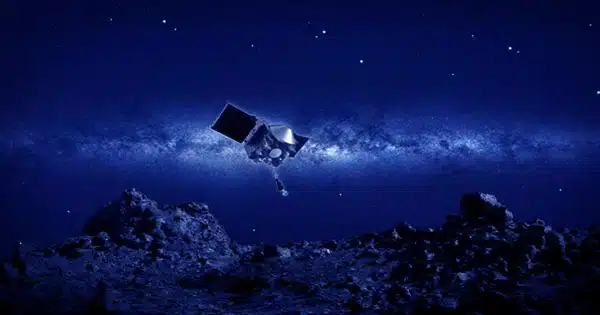The upcoming Vera C. Rubin Observatory will never leave Earth, but the extremely detailed, “big picture” vision of the cosmos it will provide astronomers could very well usher in a new era of space exploration.
The solar system contains billions of small rocky bodies and frozen objects, many of which were created roughly 4.5 billion years ago when planets like Earth formed orbiting the sun. NASA missions including OSIRIS-REx, Lucy, and Psyche have made progress in visiting these primordial solar system planets. They’ve been collecting photographs, and OSIRIS-REx has even caught a few samples, for study here on Earth, all informed by data gathered by observatories around the world.
Rubin, which will see its “first light” in 2025, will be capable of discovering millions of new asteroids, comets, and possibly even bodies transiting through our solar system from other systems. Take Oumuamua, for example, which was originally discovered in 2017. Rubin will immediately track these bodies as they migrate across the solar system and approach Earth, or as they remain in the main asteroid belt between Mars and Jupiter.

“Nothing will come close to the depth of Rubin’s survey and the level of characterization we will get for solar system objects,” Siegfried Eggl, Assistant Professor at the University of Illinois Urbana-Champaign and Lead of the Inner Solar System Working Group within Rubin’s Solar System Science Collaboration said in a statement. “It’s exciting that we may visit interesting artifacts and examine them up close. However, to do so, we must first determine their existence and location.
“This is what Rubin will tell us.”
During the 10-year Legacy Survey of Space and Time (LSST), Rubin will study cosmic objects beyond the solar system and Milky Way galaxy, including asteroid impacts.
Rubin, who will scan the entire southern hemisphere sky every few nights with an 8.4-meter, fast-moving telescope, and the world’s largest digital camera, is expected to increase our catalog of known solar system objects by at least fivefold, according to scientists.
Rubin, which is now under construction on the mountain Cerro Pachón in northern Chile, is expected to detect a large number of new solar system objects as well as gather more information about the solar system’s broader “spacescape.”
This could expose entire regions with unique objects to consider for future space mission targets.
“If you imagine Rubin staring at a beach, you’ll see millions and millions of individual sand grains that make up the entire beach. “There could be an area of yellow sand or volcanic black sand,” Eggl explained. “A space mission to an object in that region could explore what distinguishes it. Often, we don’t realize what’s strange or interesting unless we know the background.”
The observatory will also be able to inform operators to changes in the night sky within 60 seconds of detecting them, allowing space agencies to quickly plan and deploy missions to rapidly moving objects of interest.
This might potentially provide scientists with an early warning of an interstellar object like Oumuamua as it passes through the solar system, allowing teams to investigate the intruder in situ before it disappears into deep space.
“Rubin is capable of giving us the prep time we need to launch a mission to intercept an interstellar object,” Eggl said in a statement. “That’s a synergy that’s very unique to Rubin and unique to the time we’re living in.”
One project that is already planning to use Rubin data is the JAXA/European Space Agency Comet Interceptor mission, which will launch in 2029. The Interceptor will watch for a visitable, long-period solar system comet or interstellar object as it passes in front of the sun. Then it will be deployed for investigation.
Rubin could also help with missions involving fascinating items found near the passage of a spaceship as it performs its core mission.
NASA’s asteroid-hopping spacecraft, Lucy, is one active mission that could benefit from Rubin’s solar system observations. The 12-year mission will conduct the first in situ investigation of the Trojan asteroids, two families of space rocks that share Jupiter’s orbit around the sun.
Rubin could detect smaller, fainter asteroids in Lucy’s path to Jupiter, providing the NASA mission with additional and unexpected flyby opportunities.
“With our current telescopes, we’ve essentially been looking at the big boulders on the beach,” Eggl said. “But Rubin will zoom in on the finer grains of sand.”












